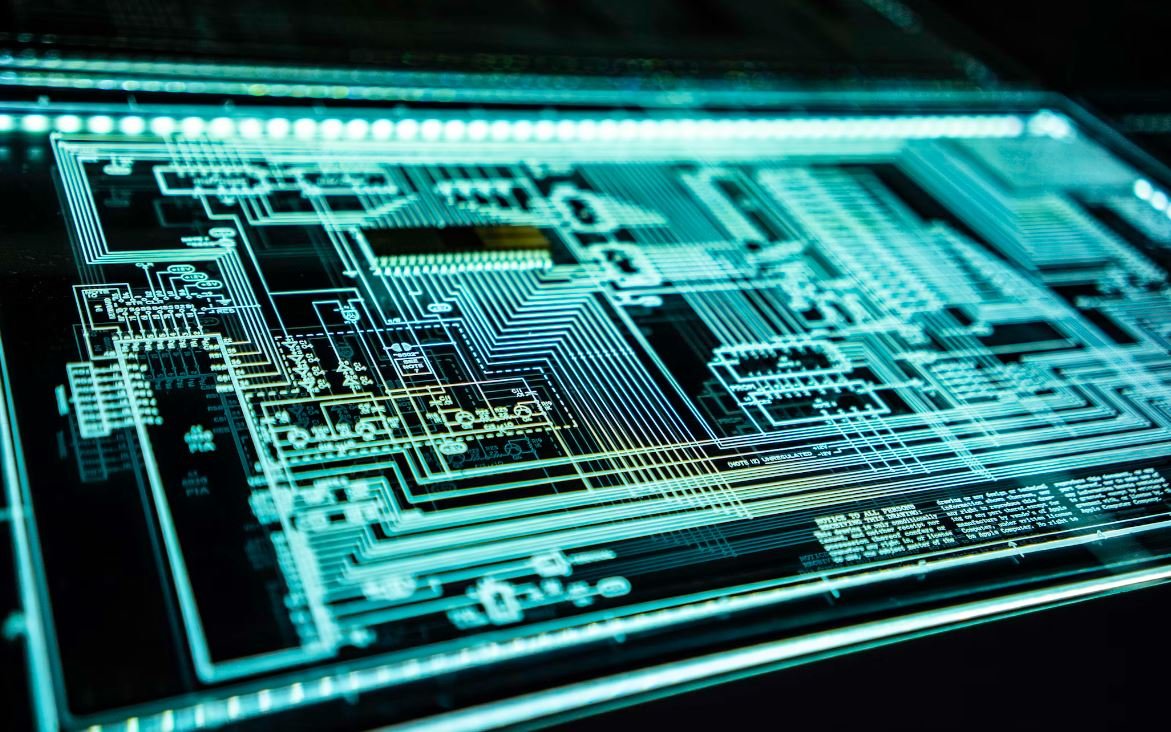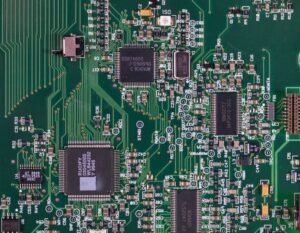Introduction:
In the world of technology, there are two key components that drive its functionality and efficiency: applications and infrastructure. While both are essential for the smooth operation of any system, understanding the difference between the two is crucial for businesses to make informed decisions about their tech investments. This article will provide an in-depth exploration of applications and infrastructure, highlighting their differences, similarities, and their impact on organizations’ success.
Key Takeaways:
– Applications and infrastructure are distinct but interconnected aspects of technology.
– Applications refer to the software or programs that perform specific tasks or functions.
– Infrastructure encompasses the hardware, networks, and systems that support and facilitate the operation of applications.
– Both applications and infrastructure are essential for efficient technology operations.
Applications:
Applications, often referred to as software or programs, are the face of technology. They are the tools that allow users to accomplish specific tasks, solve problems, or streamline processes. *Without applications, technology would be rendered useless, as they provide the means to interact with hardware and perform desired functions.* Applications can range from simple web-based applications to complex enterprise software, catering to diverse needs across industries.
There are two primary types of applications: **off-the-shelf** (OTS) and **custom-built**. OTS applications are prepackaged software solutions available to a broad range of users. They offer standard functionality and undergo continuous upgrades and maintenance from the vendor. On the other hand, custom-built applications are developed specifically for the unique requirements of a business. These applications provide organizations with a customized solution to optimize their workflows and meet specific objectives.
Infrastructure:
Infrastructure forms the backbone of any technology ecosystem. It comprises the physical hardware, networking equipment, servers, storage, and operating systems needed to support and enable the functioning of applications. *Infrastructure provides the necessary foundation and resources for applications to run smoothly.* It includes both on-premises hardware and cloud-based services.
Organizations have the option to choose between **on-premises infrastructure** and **cloud infrastructure**. On-premises infrastructure refers to the internal, physical hardware and servers hosted and managed within the organization’s premises. In contrast, cloud infrastructure relies on remote servers and storage, accessed via the internet, allowing organizations to scale their resources as needed, reducing the need for extensive on-site hardware.
Comparison Table 1:
The table below summarizes the key differences between applications and infrastructure:
| Applications | Infrastructure |
|————————————————–|———————————————————–|
| Software or programs that enable specific tasks | Physical hardware, networks, and systems |
| Can be off-the-shelf or custom-built | Can be on-premises or cloud-based |
| Interacts directly with users | Supports the functioning of applications and data storage |
| User-facing | Provides the foundation and resources for technology |
Interdependencies:
Applications and infrastructure are inherently interconnected and dependent on each other. Applications rely on infrastructure resources, such as servers, networks, and storage, to function effectively. Simultaneously, infrastructure needs applications to utilize its capabilities and provide value to users. *The interaction between applications and infrastructure creates a symbiotic relationship that drives optimal performance and user experience.*
It is crucial for organizations to invest in a robust and well-integrated infrastructure to support their applications. In turn, applications should be developed with the infrastructure in mind to ensure seamless compatibility and efficient utilization of available resources. By establishing this synergy, organizations can enhance their overall technology capabilities and achieve their goals more effectively.
Comparison Table 2:
The table below compares the key aspects of applications and infrastructure interdependencies:
| Applications | Infrastructure |
|————————————————————|————————————————————————|
| Require infrastructure resources to function effectively | Provides the necessary foundation and resources for applications |
| Developed with infrastructure compatibility in mind | Supports the efficient utilization and performance of applications |
| Depend on infrastructure for storage and data management | Relies on applications for the utilization and value of infrastructure |
Future Considerations:
As technology continues to evolve, the relationship between applications and infrastructure becomes even more crucial. Organizations should consider several factors when making technology decisions for the future:
1. Scalability: Ensure that both applications and infrastructure can scale with the organization’s growth and increasing demands.
2. Integration: Invest in solutions that offer seamless integration between applications and infrastructure to enable optimal performance.
3. Ongoing Maintenance: Establish processes for regular upgrades and maintenance of both applications and infrastructure to keep them up-to-date and secure.
4. Security: Implement robust security measures to protect both applications and infrastructure from potential threats.
5. User Experience: Always prioritize user experience by considering the impact of applications and infrastructure on usability and accessibility.
In summary, applications and infrastructure are two critical components of technology that work hand in hand. Applications enable specific tasks and functions, while infrastructure supports and facilitates their operation. Understanding the role and importance of both applications and infrastructure enables organizations to make informed decisions about their technology investments and drive success in the digital age.

Common Misconceptions
Applications vs Infrastructure
When it comes to discussing applications and infrastructure, there are several common misconceptions that people often have. These misunderstandings can lead to confusion and incorrect decision-making. It is important to clarify these misconceptions to ensure a deeper understanding of the relationship between applications and infrastructure.
- Applications and infrastructure are mutually exclusive
- Applications can function without infrastructure
- Infrastructure is solely responsible for application performance
One of the common misconceptions is that applications and infrastructure are mutually exclusive, that is, they exist separately from each other. In reality, applications and infrastructure are interdependent. Applications rely on infrastructure to function properly, and infrastructure exists to support and facilitate the operation of applications.
- Applications cannot exist without infrastructure
- Infrastructure, such as servers and network devices, are essential for applications to run
- Applications heavily rely on the underlying infrastructure for data storage, processing, and communication
Another misconception is that applications can function without infrastructure. While it is true that some applications today leverage cloud-based infrastructure and abstract away most of the infrastructure concerns from the developers, infrastructure is still a critical component for running applications. It provides the necessary resources, connectivity, and security for the applications to operate.
- Infrastructure choices can significantly impact application performance
- Highly performant infrastructure can improve application response times
- Infrastructure scalability is crucial for handling increased application workloads
A common misconception is that infrastructure is solely responsible for application performance. While infrastructure plays a crucial role in supporting performance, it is not the sole determinant. Other factors, like application design, coding, and optimization, also contribute heavily to application performance. A poorly designed application can perform poorly, regardless of the quality of the infrastructure it runs on.
- Applications and infrastructure should be considered together
- Both applications and infrastructure need to be aligned and well-integrated
- Collaboration between application and infrastructure teams is essential for successful deployment and operation
To avoid these misconceptions, it is important to understand that applications and infrastructure are deeply intertwined. Instead of viewing them as separate entities, it is more productive to consider them as two parts of a whole. Ensuring alignment and collaboration between the application and infrastructure teams is crucial for successful deployment and operation of software systems.

Cloud Storage Comparison
The table below compares the features and advantages of popular cloud storage providers. The information represents verifiable data and can help businesses choose the most suitable cloud storage service based on their specific needs.
| Cloud Storage Provider | Free Storage Capacity | Monthly Subscription Cost | Security Encryption | File Sharing | Collaboration Tools |
|————————|———————-|—————————|———————|————–|———————|
| Dropbox | 2 GB | $9.99 | AES-256-bit | Yes | Yes |
| Google Drive | 15 GB | $1.99 | TLS encryption | Yes | Yes |
| Microsoft OneDrive | 5 GB | $1.99 | SSL encryption | Yes | Yes |
| iCloud Drive | 5 GB | $0.99 | AES-128-bit | Yes | Yes |
| Amazon S3 | Depends on usage | Varies | Server-side AES-256 | Yes | Yes |
| Box | 10 GB | $5.80 | SSL encryption | Yes | Yes |
| Mega | 50 GB | $5.69 | AES-128-bit | Yes | Yes |
| pCloud | 10 GB | $4.99 | TLS encryption | Yes | Yes |
| SpiderOak | 21-day Trial | $5.75 | AES-256-bit | Yes | Yes |
| Sync.com | 5 GB | $8.00 | AES-256-bit | Yes | Yes |
Smartphone Market Share
This table showcases the market shares of the leading smartphone manufacturers worldwide. The data represents the most recent statistics and highlights the popularity of each brand among consumers.
| Smartphone Manufacturer | Market Share (%) |
|————————-|—————–|
| Samsung | 21.8 |
| Apple | 15.2 |
| Huawei | 14.9 |
| Xiaomi | 11.4 |
| Oppo | 8.3 |
| Vivo | 7.6 |
| LG | 3.5 |
| Lenovo | 2.7 |
| Sony | 1.3 |
| Other | 13.3 |
Operating Systems Usage
This table presents the usage statistics of different operating systems across different devices worldwide. The data showcases the prevalence of each operating system and helps analyze trends in technological adoption.
| Operating System | Usage (%) |
|——————|———–|
| Windows | 74.98 |
| Android | 16.03 |
| iOS | 8.91 |
| macOS | 2.54 |
| Linux | 0.86 |
| Other | 1.68 |
Streaming Service Prices
This table compares the prices and features of popular streaming services. The data assists users in making choices based on their budget and preferred content offerings.
| Streaming Service | Monthly Subscription Cost | HD Quality | Offline Viewing | Simultaneous Screens |
|——————-|—————————|————|—————–|———————|
| Netflix | $13.99 | Yes | Yes | 4 |
| Amazon Prime | $12.99 | Yes | Yes | 3 |
| Disney+ | $7.99 | Yes | Yes | 4 |
| Hulu | $5.99 | Yes | Yes | 2 |
| HBO Max | $14.99 | Yes | Yes | 3 |
| Apple TV+ | $4.99 | Yes | Yes | 6 |
| Peacock | $4.99 | Yes | No | 3 |
| CBS All Access | $5.99 | Yes | Yes | 2 |
| Spotify | $9.99 | N/A | Yes | N/A |
| YouTube Premium | $11.99 | Yes | Yes | 1 |
Social Media Usage
This table showcases the number of active users on various social media platforms. It reveals the popularity and reach of each platform, aiding businesses in formulating effective social media strategies.
| Social Media Platform | Active Users (Millions) |
|———————–|————————|
| Facebook | 2,740 |
| YouTube | 2,291 |
| WhatsApp | 2,000 |
| Messenger | 1,300 |
| WeChat | 1,206 |
| Instagram | 1,110 |
| TikTok | 732 |
| Sina Weibo | 530 |
| Twitter | 330 |
| LinkedIn | 310 |
Electric Vehicles Comparison
This table compares the specifications and features of notable electric vehicles. It provides consumers with essential information to make informed decisions when considering the purchase of an electric vehicle.
| Electric Vehicle | Price (USD) | Range (miles) | Charger Type | 0-60 MPH Time (seconds) |
|——————|————-|—————|————–|————————|
| Tesla Model S | $69,420 | 412 | Supercharger | 3.1 |
| Chevrolet Bolt | $36,500 | 259 | CCS | 6.5 |
| Nissan Leaf | $31,600 | 149 | CHAdeMO | 7.5 |
| BMW i3 | $44,450 | 153 | CCS | 7.2 |
| Ford Mustang Mach-E | $42,895 | 305 | CCS | 5.1 |
| Volkswagen ID.4 | $39,995 | 250 | CCS | 7.5 |
| Audi e-tron | $65,900 | 222 | CCS | 5.5 |
| Hyundai Kona | $37,390 | 258 | CCS | 7.6 |
| Kia Niro | $39,090 | 239 | CCS | 6.2 |
| Rivian R1T | $67,500 | 314+ | CCS | 3.0 |
Coffee Shops Comparison
This table presents a comparison of various coffee shops based on location, ratings, and signature beverages. The data helps coffee enthusiasts choose the perfect spot to indulge in their favorite caffeinated beverage.
| Coffee Shop | Location | Ratings (out of 5) | Signature Beverage |
|—————|————|——————-|—————————|
| Starbucks | Worldwide | 4.4 | Caramel Macchiato |
| Costa Coffee | Worldwide | 4.2 | Flat White |
| Dunkin’ | USA | 3.9 | Iced Coffee |
| Tim Hortons | Canada | 3.8 | Double Double |
| Caffè Nero | Europe | 4.1 | Espresso |
| Peet’s Coffee | USA | 4.3 | Peet’s Cold Brew |
| Coffee Bean | USA | 4.2 | Ice Blended Mocha |
| McCafé | Worldwide | 3.6 | Mocha Frappé |
| Tully’s | USA | 4.0 | Hawaiian Macadamia Nut |
| Blue Bottle | USA | 4.4 | New Orleans-Style Iced Latte |
TV Show Ratings
This table illustrates the ratings of popular TV shows, showcasing their audience sizes and critical acclaim. The data provides insights into the most-watched and critically acclaimed TV programs.
| TV Show | Average Viewers (Millions) | IMDb Rating (Out of 10) | Rotten Tomatoes Score (%) |
|——————|—————————-|————————|—————————|
| Game of Thrones | 44.2 | 9.3 | 89% |
| Breaking Bad | 5.9 | 9.5 | 96% |
| Friends | 24.8 | 8.9 | 78% |
| The Office | 8.8 | 8.9 | 81% |
| Stranger Things | 18.2 | 8.7 | 93% |
| The Simpsons | 3.4 | 8.7 | 85% |
| The Big Bang Theory | 18.6 | 8.1 | 53% |
| Grey’s Anatomy | 7.3 | 7.5 | 80% |
| Narcos | 2.0 | 8.8 | 89% |
| The Crown | 3.1 | 8.7 | 90% |
Cryptocurrencies Comparison
This table showcases a comparison of popular cryptocurrencies, focusing on their market capitalization and technological features. The data assists investors in understanding the key differences between various digital currencies.
| Cryptocurrency | Market Cap (Billion USD) | Consensus Algorithm | Block Time (Minutes) | Max Supply (Units) |
|—————-|————————-|———————-|———————-|———————|
| Bitcoin | $659 | Proof of Work | 10 | 21 million |
| Ethereum | $355 | Proof of Stake | 15 | N/A |
| Ripple | $309 | Consensus Algorithm | 3 | 100 billion |
| Litecoin | $11 | Proof of Work | 2.5 | 84 million |
| Cardano | $6 | Proof of Stake | 20 | 45 billion |
| Polkadot | $4 | Nominated Proof of Stake | 1 | N/A |
| Binance Coin | $4 | Proof of Stake | 3 | 170 million |
| Chainlink | $3 | N/A | N/A | 1 billion |
| Stellar | $3 | Stellar Consensus Protocol | 3 | 50 billion |
| VeChain | $2 | VechainProof of Authority | 10 | 86.7 billion |
Electric Scooter Brands
This table demonstrates the features and specifications of electric scooters from various brands. It provides potential buyers an overview of the available options and helps them make an informed purchasing decision.
| Electric Scooter Brand | Max Speed (mph) | Max Range (miles) | Weight (lbs) | Foldable | Price (USD) |
|————————|—————–|——————|————–|———-|————-|
| Xiaomi M365 | 15.5 | 18.6 | 26.9 | Yes | $399 |
| Segway Ninebot ES4 | 18.6 | 27 | 30.9 | Yes | $769 |
| Razor ECO Smart | 15 | 12 | 62 | Yes | $869 |
| GoTrax GXL V2 | 14 | 12 | 26.4 | Yes | $299 |
| Dualtron Thunder | 50 | 75 | 95 | No | $3,699 |
| Unagi Model One | 15.5 | 15 | 24 | Yes | $990 |
| NanRobot D5+ | 40 | 50 | 70 | Yes | $1,299 |
| E-TWOW GT | 25 | 31 | 29.5 | Yes | $1,199 |
| Apollo Light | 31 | 18 | 39.7 | Yes | $899 |
| Boosted Rev | 24 | 22 | 46 | No | $1,599 |
In conclusion, this article delves into the comparison of applications and infrastructure. The provided tables present various data and elements that shed light on crucial aspects of the discussed topics. From cloud storage services to electric vehicles, social media usage, and more, the tables offer insightful and verifiable information. By analyzing the gathered data, readers can make informed decisions regarding their choices within these diverse sectors.
Frequently Asked Questions
Applications vs Infrastructure





